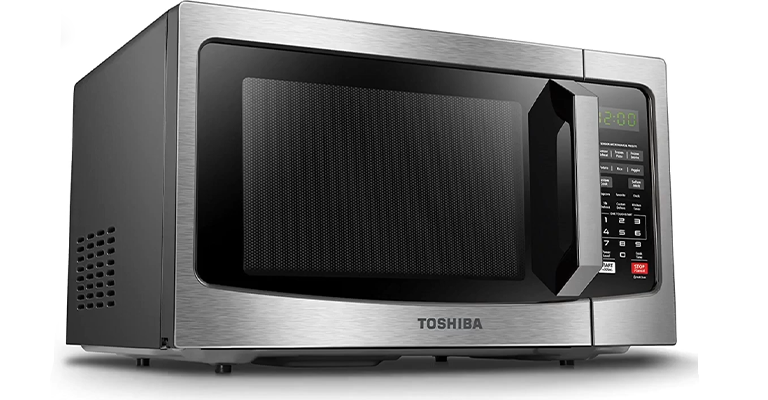What Is A Kitchen Mixer?-Versatile Tool in Every Kitchen
A kitchen mixer is the cornerstone of culinary efficiency, a versatile appliance that transcends mere convenience. At its core, it is a mechanical marvel designed to amalgamate ingredients seamlessly, revolutionizing the art of cooking and baking.
From the humble hand mixer to the stalwart stand mixer, it comes in various forms, each tailored to specific culinary demands. With an array of attachments, it kneads dough, whisks cream, and beats eggs to perfection.
This indispensable tool expedites kitchen tasks and ensures precision, guaranteeing consistent and delectable results. In essence, a kitchen mixer is a silent powerhouse that elevates every gastronomic creation.
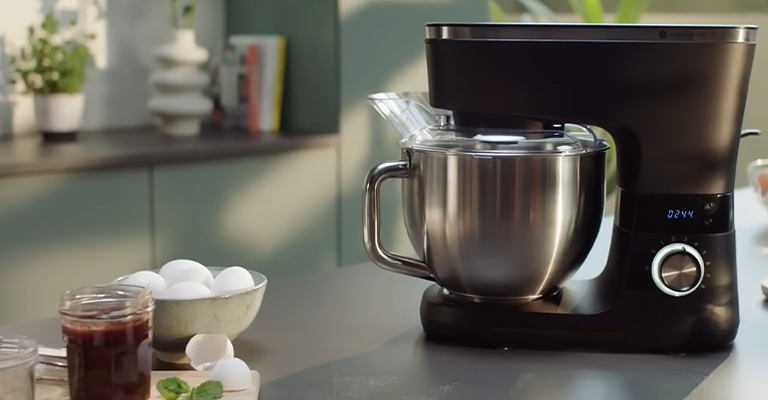
What Is A Kitchen Mixer?
A kitchen mixer is a versatile kitchen appliance designed to aid in the process of mixing, blending, whipping, and kneading various ingredients used in cooking and baking.
It’s an essential tool for any home cook or professional chef, making tasks that would otherwise be labor-intensive much more efficient.
key features and functions of kitchen mixers
Versatility
Kitchen mixers are incredibly versatile tools. With the right attachments, they can be used for various cooking and baking tasks, including mixing cake batter, whipping cream, beating eggs, kneading dough, and more. This versatility saves time and effort in the kitchen.
Consistency and Efficiency
Mixers ensure a consistent and uniform mixture, which is especially important in baking, where precise measurements and mixing times are crucial for achieving the desired texture and results.
They can also reduce the time required to complete these tasks, allowing for more efficient meal preparation.
Hands-Free Operation
Stand mixers, in particular, offer the convenience of hands-free operation. You can start the mixer and step away to work on other aspects of your recipe while it handles the mixing. This is particularly useful for recipes that require continuous mixing or for multitasking in the kitchen.
Speed Control
Most kitchen mixers come with multiple speed settings, allowing you to adjust the mixing speed to suit the specific requirements of your recipe. This flexibility helps prevent overmixing or undermixing and ensures consistent results.
Types of Kitchen Mixers
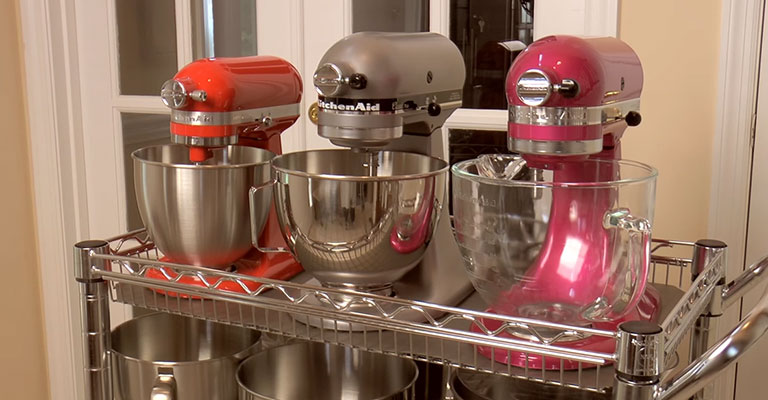
Kitchen mixers are essential tools for culinary enthusiasts and professional chefs alike, offering a range of options to suit various cooking and baking needs.
Hand Mixer
A hand mixer is a convenient and compact tool, perfect for smaller tasks like beating eggs, whipping cream, or mixing cake batters. It’s handheld, making it easy to maneuver and store in your kitchen.
Stand Mixer
A stand mixer is a countertop workhorse with a stable base and a versatile head that accommodates various attachments. Ideal for mixing heavy doughs, making large batches of cookies, and whipping up meringues, it’s known for its power and hands-free operation.
Planetary Mixer
A subtype of stand mixers, planetary mixers excel at blending ingredients evenly due to their unique orbital motion. The head moves in a circular path while also rotating on its axis, ensuring thorough mixing and kneading, making it a top choice for professional kitchens.
Spiral Mixer
Spiral mixers are favored by bakers for kneading bread and pizza dough. They feature a spiral-shaped agitator that mimics hand-kneading, resulting in excellent gluten development and consistency.
Hand-Held Immersion Blender
While not a traditional mixer, immersion blenders are versatile tools for pureeing soups, and sauces, and making smoothies. They’re handheld and easy to clean, offering a quick and efficient solution for blending tasks.
Single-Paddle Mixer
Single-paddle mixers are used in commercial kitchens, especially for blending liquids and batters. They have a single paddle attachment that stirs ingredients together effectively.
Double Spindle Mixers
Double spindle mixers are the workhorses of large-scale culinary operations. With the ability to simultaneously handle multiple batches of ingredients, they significantly increase productivity in commercial kitchens.
This feature is particularly valuable in environments where efficiency and speed are paramount, such as high-volume bakeries and catering services.
Dough Mixers
These specialized mixers are specifically engineered for the demanding task of kneading various types of dough. They often feature powerful motors and robust construction to handle the toughness of bread or pizza dough.
Dough mixers are prized by both professional bakers and serious home enthusiasts for their ability to consistently produce high-quality dough.
Commercial Mixers
Engineered for high-volume operations, commercial mixers are built to withstand the demands of busy kitchens and bakeries.
These heavy-duty machines are designed for continuous use and are equipped with powerful motors and durable components. They are a cornerstone of professional culinary establishments, enabling chefs to efficiently handle large quantities of ingredients.
Components of a Kitchen Mixer

A kitchen mixer is a complex piece of equipment with several components that work together to facilitate various culinary tasks.
Here are the key components of a typical kitchen mixer:
Base or Housing
The base or housing is the main structure that houses the motor and provides stability to the mixer.
It often contains controls for adjusting speed settings and may have additional features like a power indicator light.
Motor
The motor is the heart of the mixer, providing the power needed to drive the various attachments.
It converts electrical energy into mechanical energy, allowing the mixer to perform tasks like mixing, blending, and kneading.
Speed Control Mechanism
The speed control mechanism allows the user to adjust the mixing speed to suit the specific task.
It can be in the form of a dial, lever, or digital controls, providing variable speeds to accommodate different recipes.
Attachment Hub
Many mixers, especially stand mixers, come with an attachment hub where additional accessories can be connected.
This hub allows for a range of functionalities beyond basic mixing, such as pasta rolling, meat grinding, and vegetable slicing.
Bowl or Mixing Container
The bowl is where the ingredients are placed for mixing. It can be made of various materials, including stainless steel, glass, or ceramic.
Some mixers have bowls that lock into the base, while others may have a lift-up or tilt-head design for easy access.
Attachments
Attachments are removable tools that perform specific mixing tasks. Common attachments include:
- Beaters: For general mixing, creaming, and incorporating air.
- Dough Hooks: For kneading bread, pizza, or pastry dough.
- Wire Whisks: For whipping cream, beating egg whites, and aerating batters.
- Paddle Attachments: For tasks like mixing cookie dough and cake batter.
Safety Features
Modern mixers often include safety features such as overload protection, which can automatically shut off the motor if it becomes overheated or overloaded.
Release Mechanism
In stand mixers, there is a mechanism for lifting and lowering the mixer head or bowl. This allows for easy attachment and removal of beaters, as well as access to the mixing bowl.
Splash Guard or Pouring Shield
Some mixers come with a detachable splash guard or pouring shield that fits around the top of the mixing bowl. It helps prevent ingredients from splattering out of the bowl during mixing.
Handle or Grip
Some mixing bowls may have a handle or grip for easy maneuvering, especially when pouring batter or moving the bowl.
Power Cord and Plug
The power cord connects the mixer to an electrical outlet, providing the necessary electricity to operate the motor.
Stability Feet or Suction Cups
These components help stabilize the mixer on the countertop, preventing it from moving or vibrating excessively during operation.
Common Uses of Kitchen Mixers
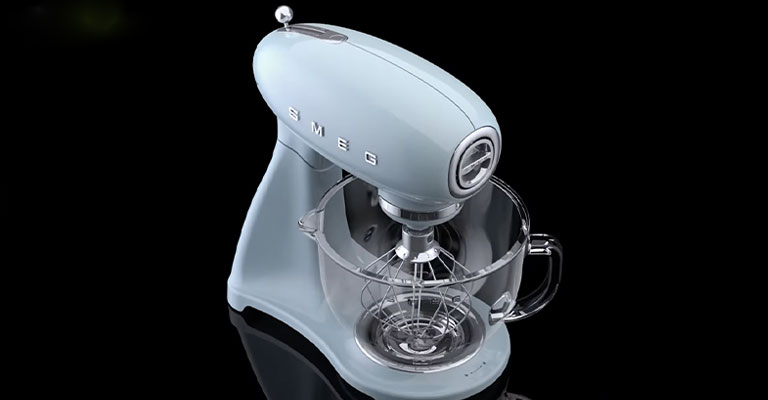
Kitchen mixers are versatile appliances that find a wide range of uses in the kitchen, making various culinary tasks more efficient and precise.
Some common uses of kitchen mixers include:
Mixing Batters
Kitchen mixers are ideal for effortlessly mixing cake batters, pancake batters, muffin batters, and other similar mixtures.
They ensure even distribution of ingredients, resulting in consistent textures and flavors in baked goods.
Whipping Cream and Eggs
Whisk attachments on mixers make whipping cream, egg whites, and other ingredients a breeze. They can quickly transform liquid cream into stiff peaks for desserts or create light, airy meringues.
Kneading Dough
For bread, pizza, and pastry dough, mixers with dough hooks are invaluable. They save time and effort, ensuring proper gluten development and consistency in baked goods.
Creaming Butter and Sugar
To achieve the right texture in cookies, cakes, and other baked goods, mixers can effectively cream together butter and sugar, creating a light and fluffy mixture.
Mixing Sauces and Dressings
Mixers can combine various ingredients for sauces, salad dressings, and marinades, ensuring that flavors are well integrated.
Making Mashed Potatoes
Mixers with paddle attachments can help create smooth and creamy mashed potatoes without the need for manual mashing or using a potato masher.
Blending Soups
Immersion blenders, a type of kitchen mixer, are excellent for pureeing soups and sauces directly in the pot, creating silky-smooth textures.
Grinding Meat
Some mixers have attachments that allow you to grind meat, making it easy to prepare homemade ground meat for dishes like burgers, meatballs, or sausages.
Pasta Making
Kitchen mixers often have attachments for making pasta, such as pasta rollers and cutters, allowing you to craft fresh pasta at home.
Mixing Ingredients for Custards and Puddings
Mixers ensure that the ingredients in custards and puddings are thoroughly combined, preventing lumps and ensuring a smooth texture.
Preparing Icing and Glazes
Mixers can efficiently blend powdered sugar, butter, and flavorings to create icings and glazes for baked goods.
Aerating Coffee or Hot Chocolate
Handheld mixers with whisk attachments can be used to froth and aerate hot beverages like coffee, cappuccino, or hot chocolate.
Considerations When Choosing a Kitchen Mixer
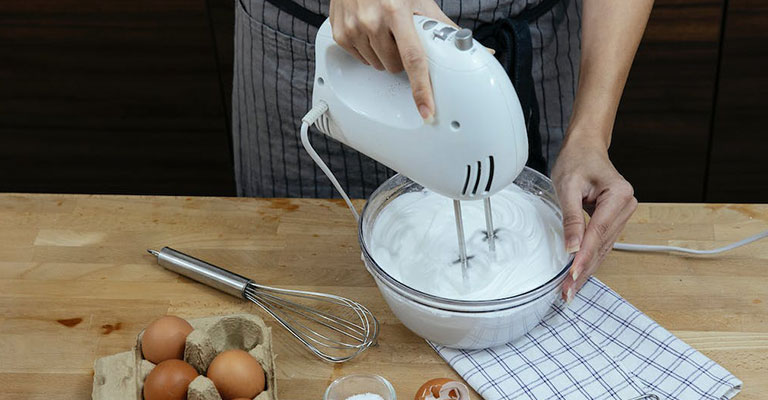
Choosing the right kitchen mixer is an important decision, as it can significantly impact your culinary experience.
Here are some key considerations when selecting a kitchen mixer:
Type of Mixer
- Hand Mixers: These are portable and versatile, suitable for light to medium mixing tasks. They’re easy to store and handle tasks.
- Stand Mixers: These are more powerful and come with a fixed base. They offer a wide range of attachments and are capable of handling heavy-duty tasks, making them essential for serious bakers and cooks.
Usage Frequency
Consider how often you plan to use the mixer. If you are a frequent baker or cook, investing in a high-quality mixer with a durable motor is a wise choice.
On the other hand, if you only use a mixer occasionally, a simpler model may suffice.
Available Kitchen Space
Assess the space in your kitchen. Stand mixers can be bulky and require a dedicated spot on the countertop.
When you have limited counter space, a hand mixer might be a more practical choice as it can be easily stored in a drawer.
Bowl Size
For stand mixers, the size of the mixing bowl is crucial. Larger bowls are beneficial for preparing bigger batches of batter or dough.
When you often cook for a family or entertain, a mixer with a spacious bowl is advantageous. For smaller households, a more compact bowl may suffice.
Motor Power
The motor’s power determines the mixer’s ability to handle tough tasks.
Look for a mixer with a powerful motor if you plan to knead bread dough or mix heavy batters. A robust motor ensures that the mixer can perform these tasks without straining.
Speed Settings
Multiple speed settings allow you to adjust the mixing speed based on the task at hand.
This flexibility is particularly important for delicate tasks like whipping egg whites or gently folding in ingredients.
Attachments and Accessories
Consider the range of attachments that come with the mixer. Dough hooks are essential for bread-making, while wire whisks are excellent for aerating and whipping.
Paddle attachments are versatile for general mixing. Having various attachments increases the mixer’s versatility.
Ease of Cleaning
Look for mixers with removable, dishwasher-safe components to simplify cleanup.
Models with smooth, easy-to-wipe surfaces are also more convenient. Easy cleaning ensures that the mixer remains in good condition and ready for use.
Brand and Model Reputation
Research the reputation of the brand and model you’re considering.
Reading reviews and seeking recommendations from trusted sources can provide valuable insights into the mixer’s performance, durability, and customer satisfaction.
Budget
Determine a budget based on your culinary needs and preferences. While higher-end models offer more features and power, there are also excellent budget-friendly options available.
It’s important to find a mixer that offers the features you need within your budget.
Warranty and Customer Support
A reliable warranty and accessible customer support are essential for peace of mind. Check the terms of the warranty and ensure that the manufacturer offers responsive customer service.
A good warranty provides assurance that the mixer is backed by the manufacturer.
Additional Features
Consider any extra features that may enhance your cooking experience. This could include features like timer functions, digital displays, or safety mechanisms like overload protection.
These additional features can add convenience and efficiency to your culinary tasks.
Size and Weight
Evaluate the size and weight of the mixer, considering your kitchen layout and storage options.
When you have limited space, a compact and lightweight model may be more suitable. Consider how easy it will be to move and store the mixer when it’s not in use.
Noise Level
Some mixers operate more quietly than others. If the noise level is a concern for you, look for models with features designed to minimize sound during operation.
The quieter operation can be particularly important if you have a small kitchen or if you prefer a quieter cooking environment.
Long-Term Considerations
Think about how your cooking habits may evolve. Investing in a mixer that can grow with you and accommodate your future culinary endeavors is a wise decision.
Consider whether the mixer’s features and capabilities align with your long-term cooking aspirations.
Maintenance and Care of Kitchen Mixers
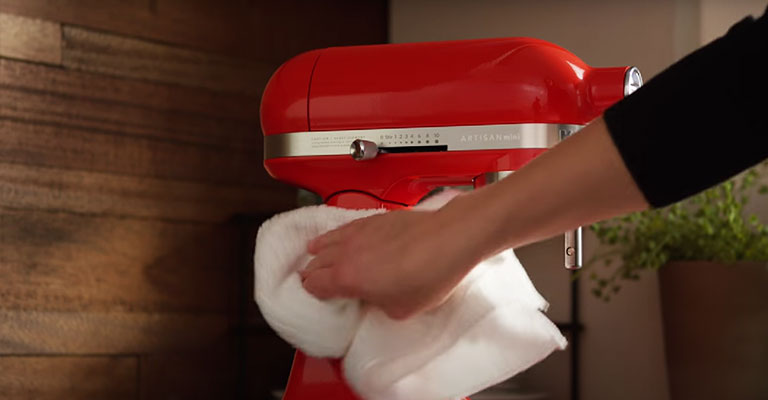
Proper maintenance and care of your kitchen mixer are crucial for ensuring its longevity and optimal performance.
Here are some essential steps to keep your mixer in excellent condition:
Regular Cleaning
After each use, unplug the mixer and clean all parts thoroughly. Wash attachments, the mixing bowl, and other removable components with warm soapy water.
Wipe down the base and controls with a damp cloth. Ensure that no food residue is left behind.
Avoid Submerging Electrical Components
While attachments and bowls are typically dishwasher-safe, electrical components should never be submerged in water.
Instead, use a damp cloth to wipe them down. Be cautious not to get any water near the motor or power cord.
Clean Attachments and Accessories
Pay special attention to attachments like beaters, dough hooks, and whisks. Scrub them gently to remove any residue. Check for any signs of wear and tear, and replace them if necessary.
Check for Loose Screws and Bolts
Periodically inspect the mixer for any loose screws or bolts, especially around the base and attachment points. Tighten them as needed to ensure stability and safe operation.
Lubricate Moving Parts
Some mixers have moving parts that may benefit from occasional lubrication.
Consult the manufacturer’s instructions for guidance on which parts, if any, require lubrication and use an appropriate food-safe lubricant.
Store Attachments Properly
Store attachments in a designated container or drawer to prevent them from getting lost or damaged. Avoid stacking heavy items on top of them, as this can cause warping or distortion.
Avoid Overloading the Mixer
Follow the manufacturer’s recommendations for the maximum capacity. Overloading the mixer can strain the motor and cause damage.
When you need to mix large quantities, do it in batches to avoid overworking the machine.
Handle the Mixer Gently
Avoid rough handling, especially when attaching or detaching accessories. Use a gentle touch to ensure that parts align correctly and securely.
Check the Power Cord
Regularly inspect the power cord for any signs of fraying or damage. If you notice any issues, replace the cord promptly to prevent safety hazards.
FAQs
What is a kitchen mixer?
A kitchen mixer is a versatile kitchen appliance designed to facilitate tasks like mixing, whipping, and kneading ingredients.
What can a kitchen mixer do?
A kitchen mixer can perform a range of tasks, including mixing batters for cakes and cookies, kneading dough for bread, whipping cream, beating egg whites, and incorporating ingredients for various recipes.
Can a kitchen mixer handle heavy dough?
Yes, many kitchen mixers, especially stand mixers, are equipped with powerful motors that can effectively handle heavy dough for bread, pizza, and other baked goods.
What are the different types of kitchen mixers?
Kitchen mixers come in various types, including hand mixers, stand mixers, and immersion blenders.
Is a kitchen mixer suitable for professional use?
Yes, kitchen mixers, particularly commercial-grade models, are widely used in professional settings such as bakeries, restaurants, and catering services.
To Recap
A kitchen mixer is the unsung hero of culinary convenience. With its diverse attachments and powerful motor, it transforms the laborious tasks of mixing, whipping, and kneading into effortless endeavors.
From delicate meringues to hearty bread dough, it tackles a spectrum of recipes with finesse. Whether a hand-held companion or a robust stand-alone, it adapts to the needs of both home cooks and professional chefs.
Its versatility and efficiency have elevated it from a mere kitchen appliance to an essential tool, revolutionizing the way we approach baking and cooking.
The kitchen mixer stands as a testament to innovation, simplifying and enhancing our culinary experiences.
